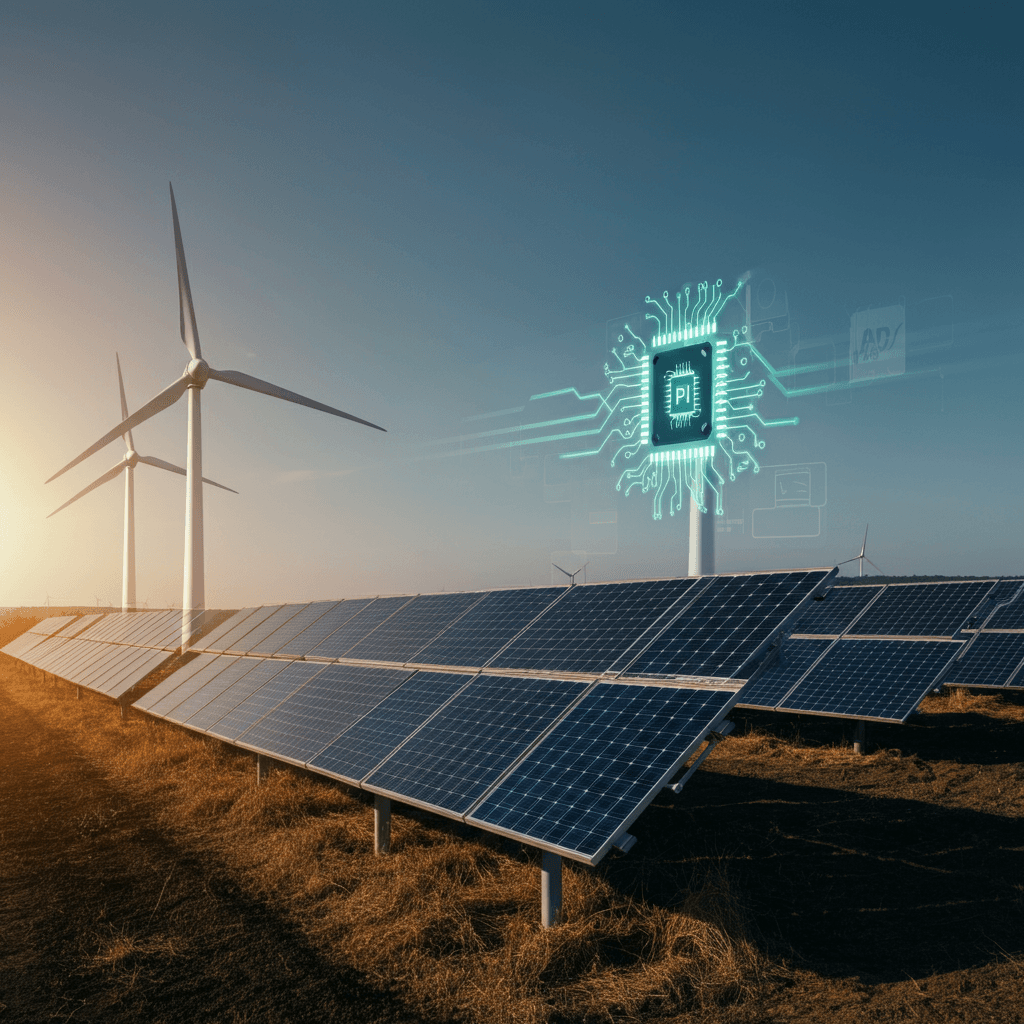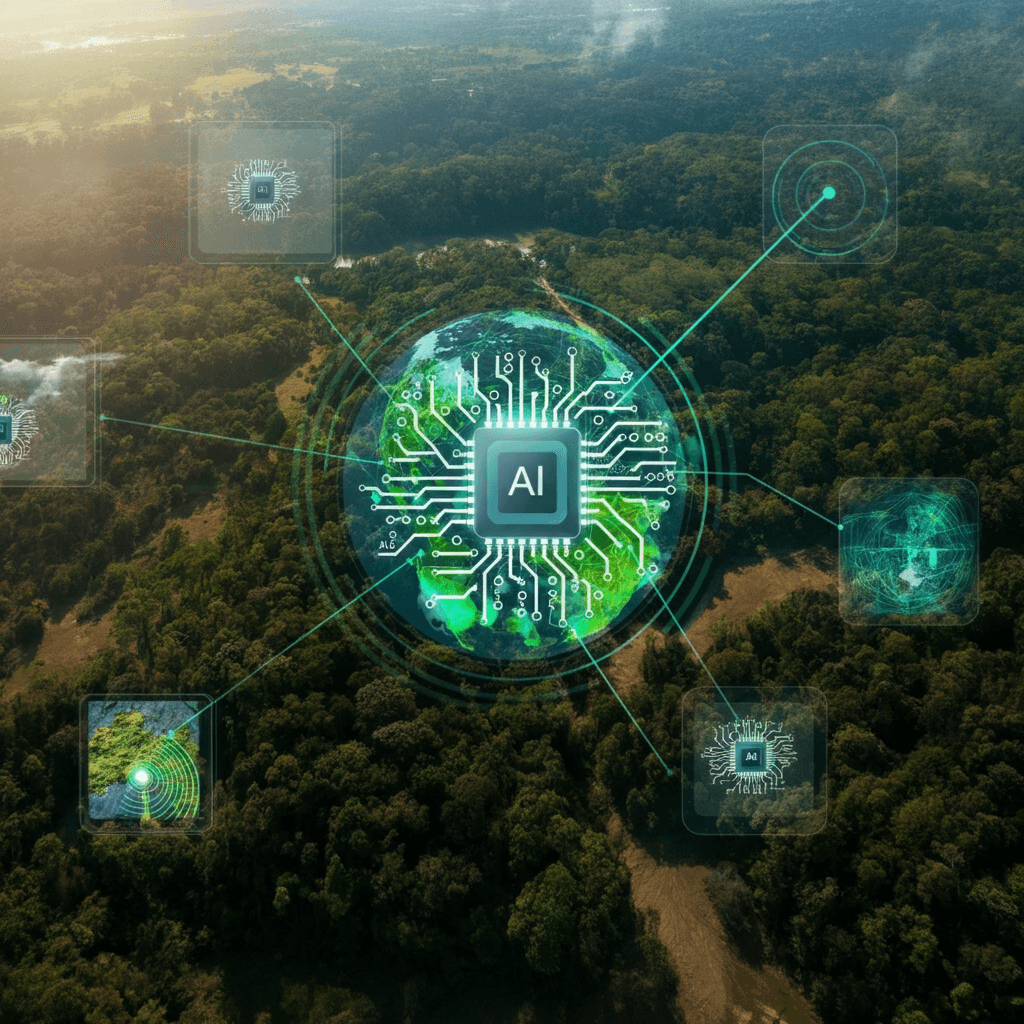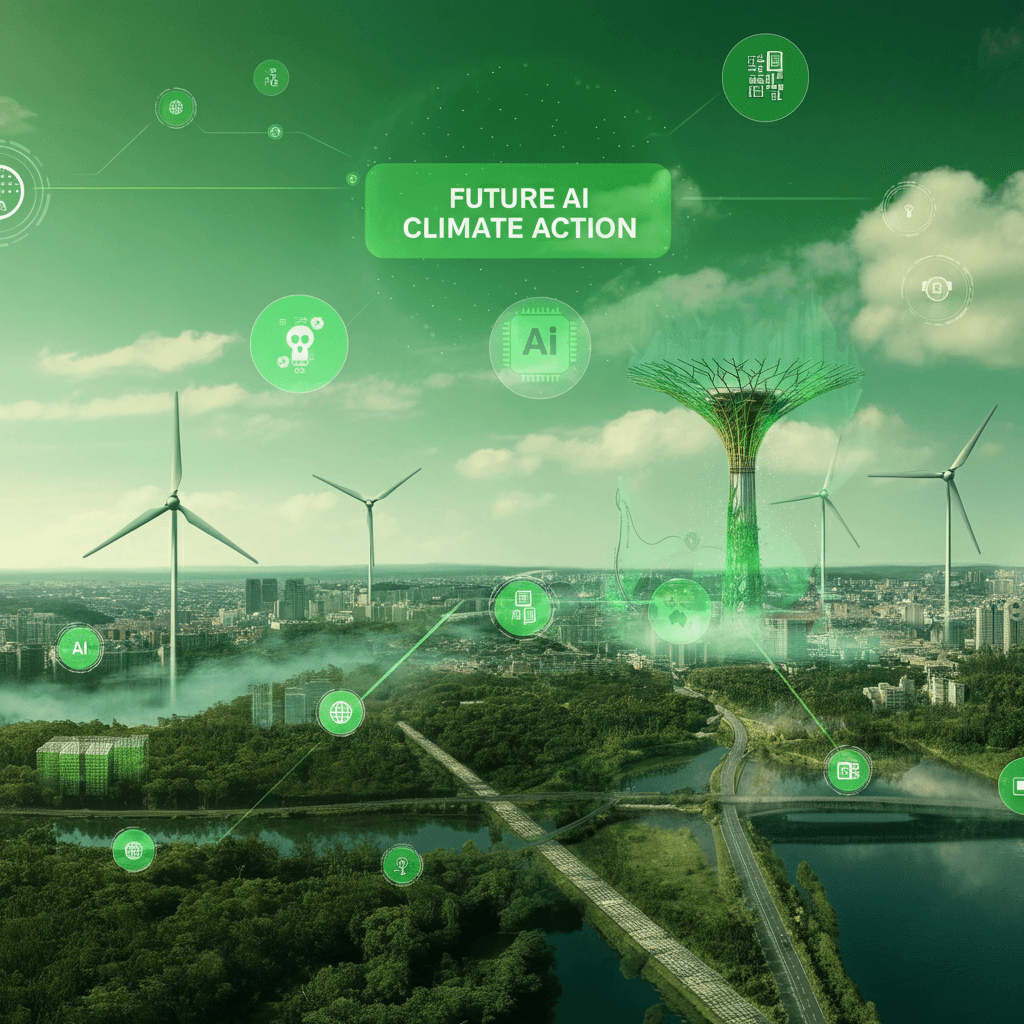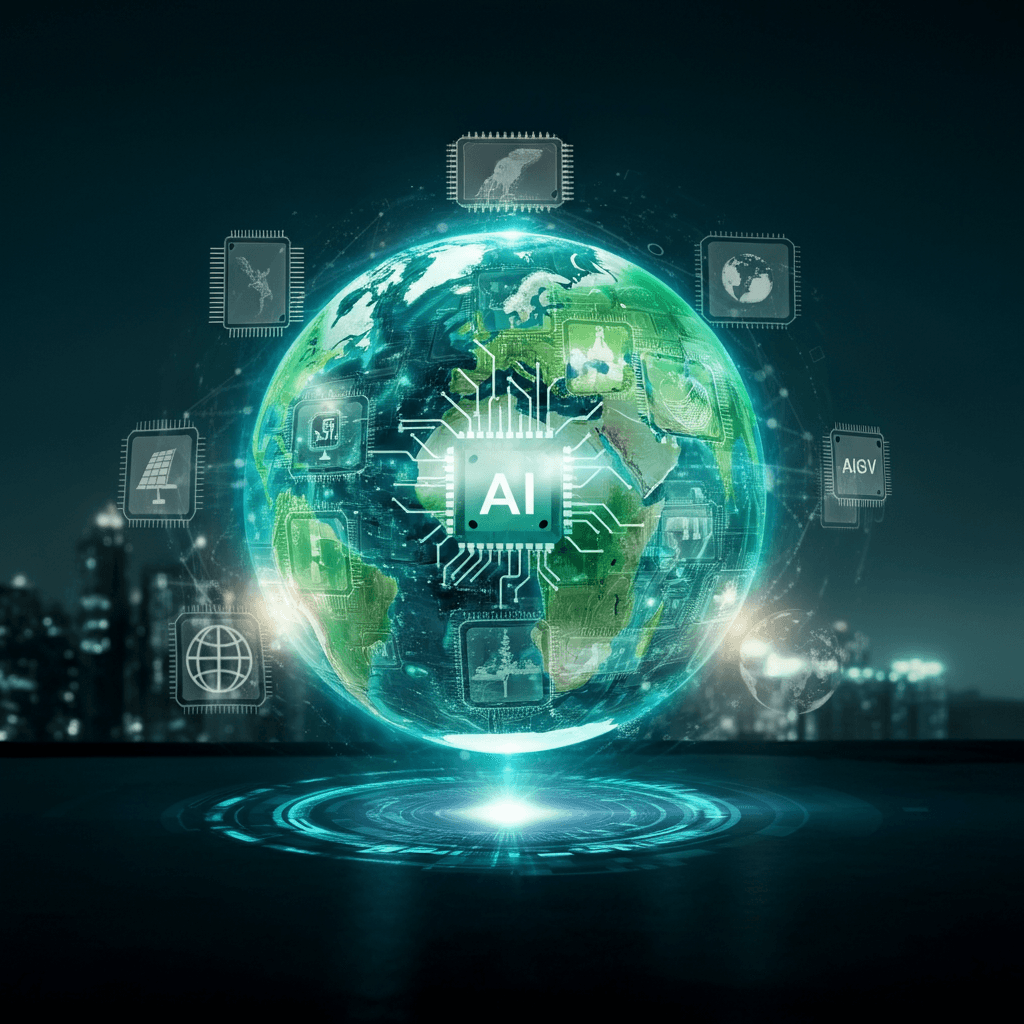Climate change remains one of the most pressing challenges of our time. Rising global temperatures, extreme weather events, and loss of biodiversity threaten ecosystems and human livelihoods alike. While governments and organizations worldwide focus on reducing greenhouse gas emissions, technology has emerged as a pivotal force in the battle against global warming. Among these technologies, artificial intelligence (AI) stands out as a powerful tool driving innovative climate solutions.
AI is proving its capacity to tackle climate change through energy optimization, environmental monitoring, weather prediction, and carbon mitigation initiatives. By analyzing massive datasets quickly and accurately, AI helps scientists and policymakers address the complexities of climate change more effectively than ever before. This article examines how AI is reshaping climate solutions, highlighting its applications, real-world examples, benefits, and limitations, as well as its potential in driving a sustainable future.
Energy Efficiency and Optimization

Energy consumption accounts for a significant proportion of global greenhouse gas emissions, making energy savings crucial. One of AI’s most promising contributions to climate action lies in its ability to enhance energy efficiency, optimize energy systems, reduce waste, and make renewable energy sources more efficient.
AI in Renewable Energy Management
AI algorithms are being used to optimize renewable energy systems, including wind, solar, and hydropower production, by forecasting energy demand and adapting energy output accordingly. For example, AI-powered tools analyze historical weather data and real-time conditions to predict the availability of solar or wind power. This enhances grid reliability, ensures consistent energy supply, and reduces dependency on fossil fuels during peak demand periods.
Real-World Example: Google’s DeepMind integrated AI into the energy grid of a wind farm. By analyzing weather forecasts and turbine performance data, the AI improved energy output predictability by up to 20%. This enables operators to sell power more efficiently to energy markets, making renewables a more viable alternative to fossil fuels.
Smart Grids and Building Management
AI is also transforming how we consume energy in buildings and municipal systems. Smart grids powered by AI maintain balance between energy supply and demand, minimizing energy waste and enabling systems to monitor energy consumption in real-time. Meanwhile, AI-driven building management systems adjust heating, lighting, and cooling based on occupancy and external climate conditions, reducing unnecessary consumption.
Real-World Example: Microsoft’s AI-powered Project Natick developed an underwater data center that operates with greater energy efficiency while lowering cooling costs and emissions.
Benefits and Challenges
Benefits: Optimizing renewable energy improves sustainability and reduces energy costs. Consumption management systems in cities reduce wastage while enhancing energy efficiency and resilience.
Challenges: Implementing AI solutions in energy grids often requires modernized infrastructure, which may be unaffordable in developing countries. Data quality and integration also remain technical hurdles.
Weather Pattern Predictions

One of the most important aspects of combating climate change is understanding the evolving behavior of weather systems through the use of AI models. AI’s ability to analyze vast amounts of meteorological and environmental data is unlocking deeper insights into weather forecasting, which is critical for disaster preparedness and mitigation.
Enhanced Climate Models
Traditional climate models rely on historical weather patterns and linear calculations, which can be ineffective for predicting extreme events caused by global warming. AI excels at modeling complex, nonlinear relationships within climate systems, leading to more accurate predictions of heatwaves, storms, droughts, and flooding.
Real-World Example: IBM’s “AI Weather Insights” solution provides accurate short-term and long-term weather forecasts to farmers and disaster management agencies, enabling them to make informed decisions and minimize risk.
AI in Disaster Management
AI tools have been deployed to predict and respond to extreme weather events. For instance, AI-driven early warning systems can alert communities in vulnerable regions about approaching cyclones or floods, providing vital time for evacuation and preparation.
Real-World Example: Jupyter, an AI platform used by organizations like the Japanese Meteorological Agency, forecasts extreme rainfall patterns and typhoons. By achieving higher accuracy in storm tracking, the system has saved lives and minimized economic losses.
Benefits and Challenges
Benefits: AI improves the accuracy of weather forecasts, enabling better preparedness for climate impacts. Its predictive capabilities also help insurers, municipalities, and farmers plan for climate risks.
Challenges: AI climate models require high-quality, real-time data, which may not always be available for remote regions. Resource disparities across countries may hinder equal access to predictive tools.
Environmental Monitoring and Biodiversity Protection

Monitoring environmental conditions is a crucial aspect of managing climate change and preserving biodiversity. AI automates data collection, providing valuable insights into land use, forest coverage, ocean health, and wildlife patterns.
AI in Deforestation Tracking
Deforestation contributes significantly to carbon emissions and biodiversity loss. AI-powered satellite imagery and machine learning algorithms can monitor land use changes, detect deforestation hotspots, and suggest targeted interventions for restoration.
Real-World Example: Global Forest Watch uses AI to process satellite data and provide near-real-time alerts for illegal deforestation activities. Local authorities use these insights to enforce conservation laws and protect vulnerable ecosystems.
Protecting Marine Environments
AI’s ability to analyze complex oceanic datasets is also aiding efforts to monitor marine environments. From tracking coral bleaching events to predicting harmful algal blooms, AI is offering unprecedented tools for ocean conservation.
Real-World Example: The Allen Coral Atlas leverages AI to map coral reefs globally, monitoring changes to reef structures and helping researchers prioritize preservation areas.
Benefits and Challenges
Benefits: Automated environmental systems provide actionable insights at greater scale and accuracy than manual efforts. They empower conservationists with real-time intelligence.
Challenges: While AI excels in monitoring, physical intervention for restoration and protection ultimately requires significant funding and human mobilization.
Carbon Footprint Reduction and Carbon Emissions

AI technologies are empowering businesses and individuals to measure, monitor, and reduce their carbon footprint by optimizing the use of clean energy. By analyzing emissions data, AI systems suggest behavior or process modifications to lower overall carbon output.
Greening Supply Chains
AI is transforming industrial and transportation supply chains by identifying inefficiencies and reducing emissions. For example, AI algorithms determine optimal shipping routes, improve fleet fuel efficiency, minimize idle operations in factories, and assist in training AI models to measure and reduce the environmental impact of these operations.
Real-World Example: Maersk, a shipping giant, uses AI-powered tools to optimize its shipping routes and reduce fuel consumption, cutting millions of tons of CO2 emissions annually.
Sustainable Agriculture
Agriculture is a significant contributor to methane and CO2 emissions. AI applications in sustainable farming help optimize irrigation, reduce fertilizer overuse, and enhance soil health.
Real-World Example: Blue River Technology’s AI-driven solutions guide precision farming techniques, significantly reducing the environmental impact of agriculture while improving crop yields.
Benefits and Challenges
Benefits: AI reduces emissions across various sectors by optimizing processes and promoting sustainable practices.
Challenges: Scaling advanced AI systems for small businesses or underfunded industries remains a major challenge.
Implementing AI in Energy Operations
Implementing AI in energy operations can significantly enhance efficiency, reduce costs, and promote sustainability. AI can be applied in various aspects of energy operations, including predictive maintenance, energy consumption optimization, and renewable energy source optimization. By leveraging machine learning algorithms and data analytics, energy companies can gain valuable insights into their operations and make data-driven decisions.
One of the key benefits of implementing AI in energy operations is the ability to optimize energy consumption. AI algorithms can analyze energy usage patterns and identify areas of inefficiency, enabling energy companies to take corrective action and reduce waste. Additionally, AI can help optimize renewable energy sources, such as wind and solar power, by predicting energy output and adjusting energy storage accordingly.
Real-World Example: Siemens uses AI-driven predictive maintenance to monitor and maintain wind turbines. By analyzing data from sensors, the AI can predict when a turbine is likely to fail and schedule maintenance before a breakdown occurs. This not only reduces downtime but also extends the lifespan of the turbines, making renewable energy systems more reliable and cost-effective.
However, implementing AI in energy operations also requires careful consideration of ethical considerations and unintended consequences. For instance, the use of AI in energy operations may raise concerns about job displacement, data privacy, and cybersecurity. Therefore, it is essential to develop and implement AI solutions that are transparent, explainable, and aligned with human values.
Ethical Considerations and Unintended Consequences
The use of AI in energy operations and climate change mitigation raises several ethical considerations and unintended consequences. One of the key concerns is the potential for job displacement, as AI algorithms and automation replace human workers. Additionally, the use of AI in energy operations may raise concerns about data privacy, cybersecurity, and the potential for bias in AI decision-making.
Another unintended consequence of using AI in energy operations is the potential for increased energy consumption. While AI can help optimize energy consumption and reduce waste, it may also lead to increased energy consumption in other areas, such as data centers and AI training. Therefore, it is essential to carefully consider the overall energy footprint of AI solutions and develop strategies to mitigate any negative impacts.
Real-World Example: The training of AI models, such as those used by OpenAI, requires significant computational power, which in turn consumes a large amount of energy. This paradoxically increases the carbon footprint, even as AI aims to reduce it in other areas.
Finally, the use of AI in energy operations raises concerns about the scalability and affordability of the technology. While AI can help optimize energy consumption and reduce costs, it may also be expensive to implement and maintain, particularly for small and medium-sized energy companies. Therefore, it is essential to develop and implement AI solutions that are cost-effective, scalable, and accessible to all energy companies, regardless of size or resources.
Future Potential of AI in Climate Action

The ongoing development of AI tools is ushering in new opportunities for sustainable solutions to climate challenges. Emerging trends include the integration of blockchain for transparent carbon trading, AI-powered green tech startups focused on energy storage, and autonomous environmental restoration systems.
Collaboration will be crucial moving forward. Governments, corporations, and research institutions must work together to adapt AI for sustainable applications while investing in equitable infrastructure to bring these technologies to underserved regions.
AI provides powerful tools in the fight against global warming, but it is not a standalone solution. To maximize its impact, it must be coupled with robust policies, public engagement, and commitment to achieving net-zero emissions across industries.
By harnessing AI’s potential thoughtfully, humanity has a chance to mitigate one of the greatest challenges of our era while building a sustainable and resilient future for the planet.
